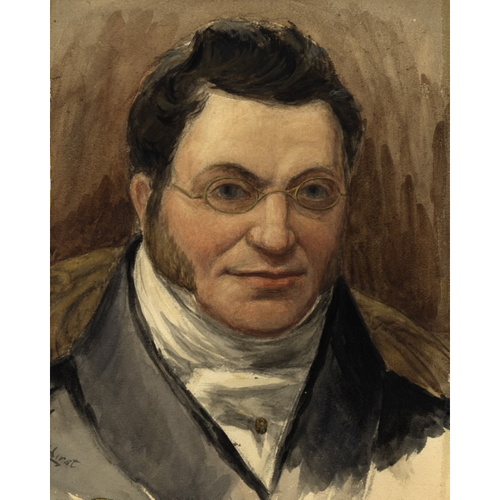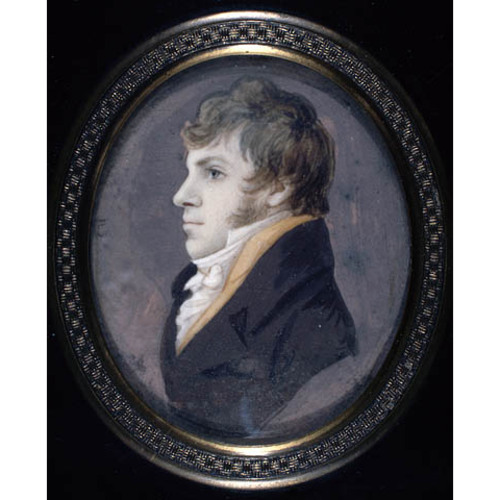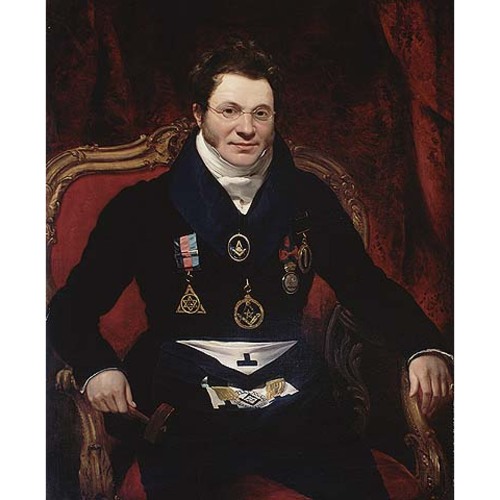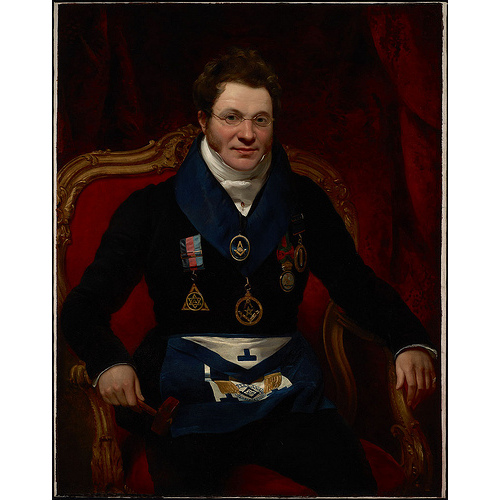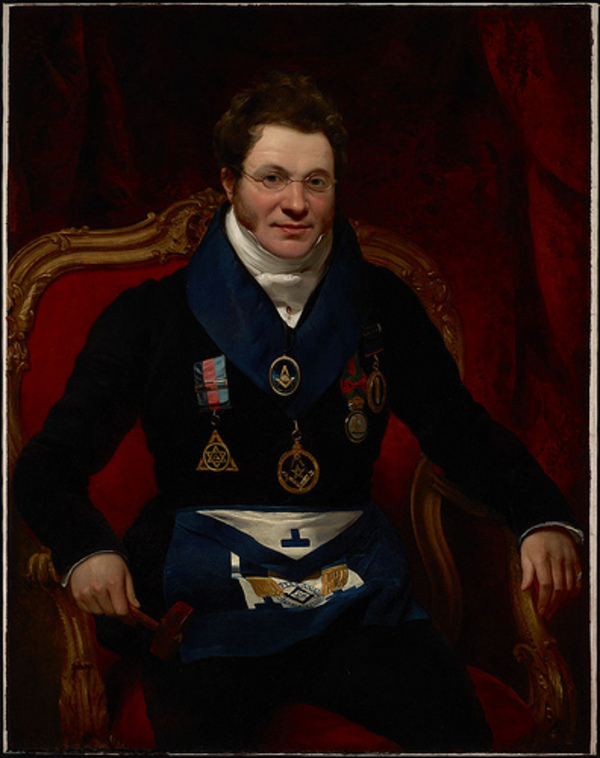
Source: Link
McGILLIVRAY, SIMON, businessman; b. c. 1783 or more likely in 1785 in Dunlichty parish, Inverness-shire, Scotland, son of Donald McGillivray and Anne McTavish; m. 23 Nov. 1837 Ann Easthope, and they had two daughters, one born posthumously; d. 9 June 1840 in Blackheath (London), England.
Simon McGillivray, the son of a poor tenant farmer on the Clovendale estate, benefited like his older brothers William* and Duncan* from the help of his maternal uncle, Simon McTavish*, who saw to his education. Because he had a lame foot, instead of coming to the Canadas and being put through the same kind of apprenticeship in the fur trade as his two brothers, Simon McGillivray worked for McTavish, Fraser and Company of London. This enterprise, which had been founded by McTavish to maximize the North West Company’s profits, supplied the Montreal firm with trade goods, obtained credit for it, looked after shipments, and sold the pelts at the best price on the London market. When his uncle died in 1804 McGillivray inherited £500.
The following year he became a partner in McTavish, Fraser and Company, which assigned him one of the nine shares, and then in 1808 granted him another. In 1811 he was made a partner of McTavish, McGillivrays and Company (formerly McTavish, Frobisher and Company). The firm already held four of the nine shares of McTavish, Fraser and Company and by this move increased its holdings in the enterprise to two-thirds. McGillivray had visited Montreal at the time of his uncle’s death. Over the following years he quickly gained experience in the firm’s affairs, being involved in its ordinary transactions, in negotiations to obtain a charter for the NWC, and in William McGillivray’s efforts to gain some control of HBC assets. When Lord Selkirk [Douglas*] turned the last-mentioned endeavour to his advantage and announced his firm intention of setting up a colony on the banks of the Red River, Simon was put in charge of a press campaign in England against him, but to no avail. He told the NWC winterers that Selkirk “must be driven to abandon [his plan], for his success would strike at the very existence of our trade.” In 1814, when McTavish, McGillivrays and Company was being reorganized, Simon came to Montreal and put in an appearance with his three shares as heir presumptive of his brother William, who with him was the only legitimate representative of the NWC in England. His authority in McTavish, Fraser and Company, where he worked daily, had grown steadily, whereas that of his cousin John Fraser, its financial expert in McTavish’s time, had gradually decreased. Since September 1808 the London firm had no longer had any outsiders in its ranks.
It was while working largely from London, and within the context of McTavish, Fraser and Company affairs, that McGillivray became involved in the emerging and deepening crisis in the NWC, without understanding its importance for a long time. But, as the struggle against Selkirk and the HBC became more intense and profits continued to fall, it became impossible not to sense that matters were at a delicate pass. In October 1820 William McGillivray finally realized how serious the situation was. From then on Simon took the leading role: the solution he devised, with Edward Ellice*’s help, was to merge the two giant fur companies. He later wrote, “In the month of December 1820, I opened a negotiation with the Hudson’s-Bay Company, for a general arrangement upon a new basis; which, with the co-operation of my friend Mr. Ellice, was in three months concluded.” In January 1821 Colin Robertson, speaking of the two men engaged in the discussions in the name of the NWC, remarked: “I like Simon much better than his friend the Member of Parliament; there is a sort of highland pride and frankness about the little fellow that I don’t dislike.” The merger of the two rivals was effected late in March. On 27 May Simon was in Montreal, working to get the agreements accepted. On 12 June he and William left Montreal to meet the NWC partners at Fort William (Thunder Bay, Ont.). On 21 July, his mission accomplished, he departed for Hudson Bay. On 12 July Robertson had written: “Simon McGillivray has carried everything without even the semblance of opposition. The first day he opened the business, the second the Deed and Release was signed, and the third all was peace and harmony.” Despite an appearance of balance within the new organization and the presence on the joint committee of William and Simon McGillivray, the situation steadily deteriorated. The agreement establishing McTavish, McGillivrays and Company came to an end in 1822; it was succeeded that year by McGillivrays, Thain and Company, but both companies finally went bankrupt in 1825.
Simon McGillivray’s role in these developments is probably open to question. It is certain, however, that one of the main beneficiaries of them was Ellice. Since the period of the American revolution, the Ellice family had been more interested in the fur trade in the southwest, but it probably had ambitions to gain control of the riches in the northwest. It would not be surprising if the outcome of the crisis in part stemmed from a long and patient pursuit by the family to ensure its supremacy in the fur-trade economy.
Simon McGillivray’s career was by no means over. In 1829 he was chosen by the United Mexican Mining Association of London to help reorganize the administration of the company’s silver mines. On his return from Mexico, he became one of the owners of the Morning Chronicle and London Advertiser in 1835. In 1837 he married the eldest daughter of his partner John Easthope. He died in 1840. A mason, at his death he was still provincial grand master of Upper Canada, an office he had held since 1822.
Les bourgeois de la Compagnie du Nord-Ouest (Masson). Docs. relating to NWC (Wallace). Innis, Fur trade in Canada (1962). E. A. Mitchell, Fort Timiskaming and the fur trade (Toronto and Buffalo, N.Y., 1977). Rich, Fur trade (1967). J. R. Robertson, The history of freemasonry in Canada from its introduction in 1749 . . . (2v., Toronto,1899). M. [E.] Wilkins Campbell, McGillivray, lord of the northwest (Toronto, 1962); Northwest to the sea; a biography of William McGillivray (Toronto and Vancouver, 1975). Wallace McLeod, “Simon McGillivray (ca 1785–1840),” Ars Quatuor Coronatorum (Margate, Eng.), 96 (1983): 1–35.
Cite This Article
Fernand Ouellet, “McGILLIVRAY, SIMON,” in Dictionary of Canadian Biography, vol. 7, University of Toronto/Université Laval, 2003–, accessed March 29, 2025, https://www.biographi.ca/en/bio/mcgillivray_simon_7E.html.
The citation above shows the format for footnotes and endnotes according to the Chicago manual of style (16th edition). Information to be used in other citation formats:
| Permalink: | https://www.biographi.ca/en/bio/mcgillivray_simon_7E.html |
| Author of Article: | Fernand Ouellet |
| Title of Article: | McGILLIVRAY, SIMON |
| Publication Name: | Dictionary of Canadian Biography, vol. 7 |
| Publisher: | University of Toronto/Université Laval |
| Year of revision: | 1988 |
| Access Date: | March 29, 2025 |


